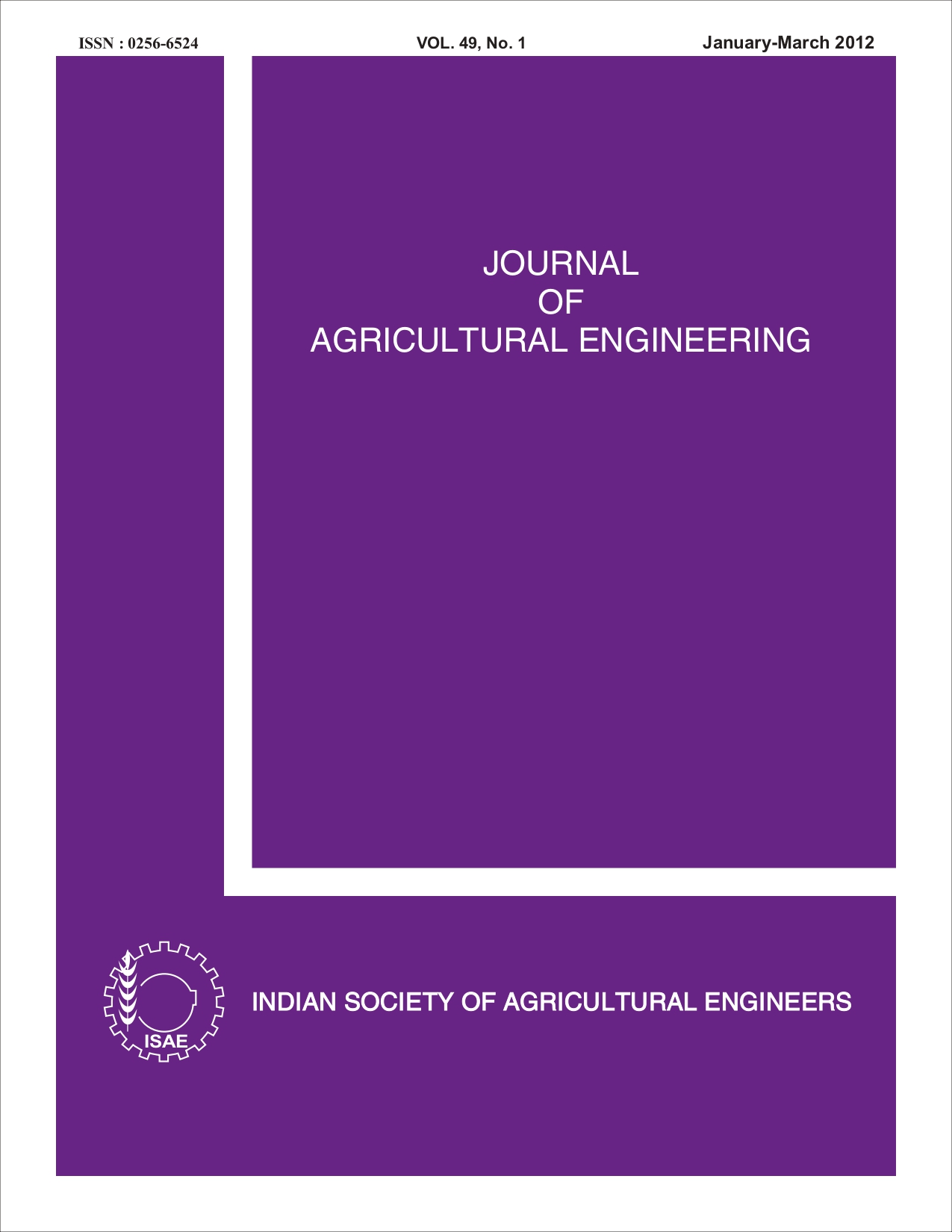Preference of Red Flour Beetle(Tribolium Castaneum) in Infesting Roasted Bengal Gram and its By-products
DOI:
https://doi.org/10.52151/jae2012491.1468Keywords:
Tribolium castaneum , roasted Bengal gram , growth , weight loss , qualityAbstract
Experiments were conducted to study the preference of red flour beetle, T. castaneum, to roasted Bengal gram and its by-products. The preference of red flour beetle was significantly more in roasted Bengal gram brokens (59.06%) than roasted whole grains (25.40%) and flour (15.38%). In 15 days after storage, infestation of red flour beetle led to weight loss of 2.33, 2.33 and 2.47%; and in 30 days after storage 2.57, 4.67 and 8.47% in roasted Bengal gram, brokens and flour, respectively. Fried gram flour had significantly more number of larvae (197.50) when compared to broken (74.00), while roasted Bengal gram recorded lowest number of larvae.References
Apert J. 1987. The Storage of Foodgrains and Seeds. Macmillan, London, pp: 146.
Ashamo M O. 2002. Relative performance of Triboliumcastanuem (Herbst.) in different flours. Applied Tropical Agric., 7,46-49.
Fedina T Y; Lewis S M. 2007. Effect of Tribolium castaneum (Coleoptera: Tenebrionidae) nutritional environment, sex and mating status on response to commercial pheromone traps. J. Economic Entomology, 100, 1924-1927.
Gueye M T; Delobel A. 1999. Relative susceptibility of stored pearl millet products to insect infestation. J. Stored Products Res., 35, 277-283.
Harris K L; Limblad C J. 1978. Post harvest loss assessment methods. A manual of methods for the evaluation of post harvest losses. American Assoc. of Cereal Chemists, 75-79.
Hulse J H. 1991. Nature, composition and utilization of grain legumes. In: Uses of tropical Legumes, Proceedings of a Consultants Meeting, March 27-30, 1989, ICRISAT Centre, ICRISAT, Patancheru, A.P. 502 324, India, 11-27.
Karunakaran C; Jayas D S; White N D G. 2004. Identification of wheat kernels damaged by the red flour beetle using x-ray images. Biosystems Engng., 87(3), 267-274.
Kiruba S. 2008. Biological notes on some common stored products pests of Kanyakumari district. J. Bas. and App. Bio., 2,47-51.
Lale N E S; Ajayi F A; Sastawa B M; Odo P E. 2002. Effects of grain breakage and processing method on the development of Tribolium castaneum (Herbst.) (Coleoptera: Tenebrionidae) in grains and products obtained from cultivars of dry season (Masakwa) sorghum (Sorghum bicolor Moench) in Maiduguri, Nigeria. Nigeria J.Experimental and App. Bio., 3, 45-49.
Martin J H; Leonard W H; Stamp D L. 1976. Principles of Field Crop Production. 3rd Ed. Macmillan Pub. Co. Inc., New York, pp: 1118.
Mohale S; Allotey J; Siame B A. 2010. Control of Tribolium confusum by diatomaceous earth (Protect-IT) on stored groundnut (Arachis hypogaea) and Aspergillus flavus link spore dispersal. African J. Food Agric., Nutrition and Dev., 10(6), 2678-2694.
Pranoto R I; Sim M S; Howie A M E; Ho S H. 1991. Current trends in integrated pest management for grain storage in the Asean region. Asean Grain Post-harvest Programme, Thailand, 67-80.
Reddy U K; Pushpamma P. 1980. Effect of insect infestation and storage on the nutritional quality of different varieties of pigeon pea. In: Proceedings of International Workshop on Pigeon pea, ICRISAT, 451-453.
Rees D P. 2004. Beetles (Order: Coleoptera). In: Rees D P; Rangsi T V (Eds.), Insects of stored products, CSIRO Publishing, Australia, 11-121.
Sinha R N; Watters F L. 1985. Insect pests of flour mills, grain elevators, and feed mills and their control. Agriculture Canada Publication No. 1776. Canadian Government Publishing Centre, Ottawa, Canada.
Tanzubil P B. 1991. Reducing post harvest losses in stored grain. Agriculture Extension Bulletin, Ghana MOA/NAES.
Trematerra P; Fontana F; Mancini M; Sciarretta A. 1999. Influence of intact and damaged cereal kernels on the behaviour of rice weevil, Sitophilus oryzae (L.) (Coleoptera: Curculionidae). J. Stored Product Res., 35, 265-276.
Trematerra P; Sciarretta A; Tamasil E. 2000. Behavioural responses of Oryzaephilus surinamensis, Tribolium castaneum and Tribolium confusum to naturally and artificially damaged durum wheat kernels. Entomologia Experimental Applicata, 94, 195-200.
Walter V E. 1990. Stored Product Pests. In: Story K; Morel D (Eds.), Handbook of Pest Control, Franzak & Foster Co., Cleveland, OH, 526-529.
Weaver D W; Petroff R. 2005. Stored Grain Pest Management, Pest Management for grain Storage and Fumigation. USDAARS and the University of Wisconsin, 102-116.














